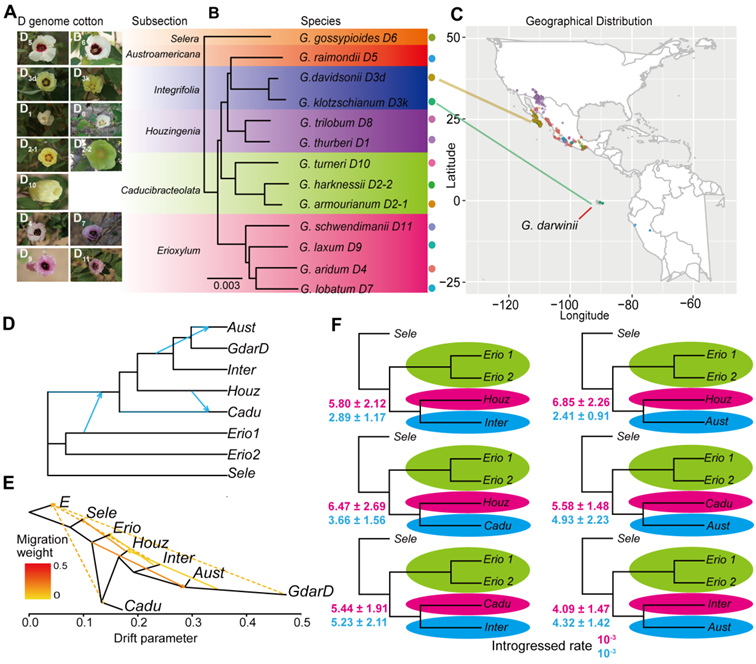- Location : Home» Newsroom
Discovery of a New Mechanism for Adaptive Evolution of Diploid Cotton Species
The Chinese Academy of Agricultural Sciences has made a significant discovery regarding the mechanism of adaptive evolution of diploid cotton species. Related research has been conducted on the formation and evolution of diploid species in the cotton genus, and the research results provide new insights for the adaptive differentiation of diploid cotton species. The findings have been published in the journal of Plant Communication.
Cotton (Gossypium) stands as a crucial economic crop, serving as the primary source of natural fiber for the textile sector. However, the evolutionary mechanisms driving speciation within the Gossypium genus remain unresolved. In this investigation, researchers leveraged 25 Gossypium genomes and introduced four novel assemblies, G. harknessii, G. Gossypioides , G. trilobum, and G. klotzschianum, to delve into the speciation history of this genus. Notably, it was encountered intricate phylogenies potentially stemming from introgression. These complexities are further compounded by incomplete lineage sorting (ILS), a factor likely instrumental in shaping the swift diversification of cotton. Intriguingly, this analysis revealed the non-random distribution of ILS regions across the reference Gklo genome. Moreover, signs of robust natural selection influencing specific ILS regions were identified.. Noteworthy variations pertaining to speciation emerged between the closely akin sister species Gklo and Gdav. These findings contribute to an enriched comprehension of ILS's role in adaptive radiation, thereby shedding fresh light on the intricate speciation history of the Gossypium genus.
Link to the paper: https://doi.org/10.1016/j.xplc.2023.100728
By Fang Liu (liufcri@163.com)
